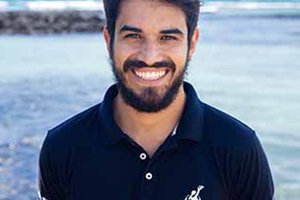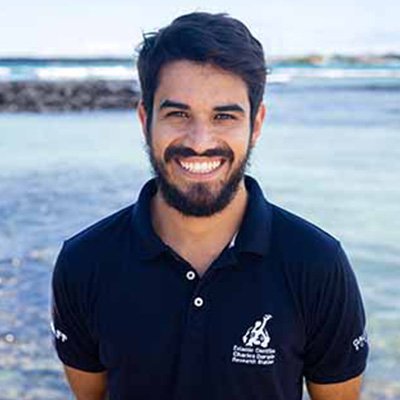During the 1800s the Galapagos islands were used by whalers and privateers as a base to gather supplies. They would release large mammals in the hopes that they would reproduce and next time, when they passed by, they would have a steady supply of fresh meat. At that time, the islands were largely undisturbed, and with no large predator to control introduced species, so the population of large mammals exploded.
At some point, these privateers discovered that Galapagos giant tortoises could live up to a year without food and water, making them the ideal source of fresh food on board during their long voyages. This sadly led to various giant tortoise species being over-exploited to such an extent on some islands that they were hunted to extinction and, on other islands, were pushed to the brink of extinction.
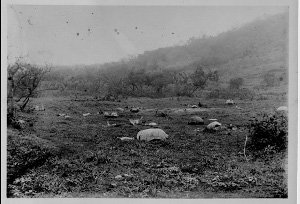
Fast-forward to 1971, scientist József Vágvölgyi and his wife Maria were on Pinta Island looking for snails. Pinta Island is one of those islands where scientists thought giant tortoises had gone extinct. Yet, József and Maria’s investigation came to a halt when out of the bushes a giant tortoise (C. n. abingdonii) crossed their path. As they approached it, the individual retracted its head into it shell, then pulled it out again and carried on walking.
Without knowing the significance of this moment, József took the first photograph of “Lonesome George”, after which they promptly returned to look for snails.
Once back at the Charles Darwin Foundation on Santa Cruz Island, the couple recounted their experience to fellow scientists, soon realizing their amazing discovery. So, in 1972 a joint expedition led by CDF and the Galapagos National Park set off to Pinta Island in search of Lonesome George, which of course at the time had not been given this name.
After a couple days of searching, Manuel Cruz (CDF) and Francisco Castañeda (GNP) saw something in the distance, at first, they thought it was a goat, but on further inspection they saw that it was a solitary male giant tortoise.
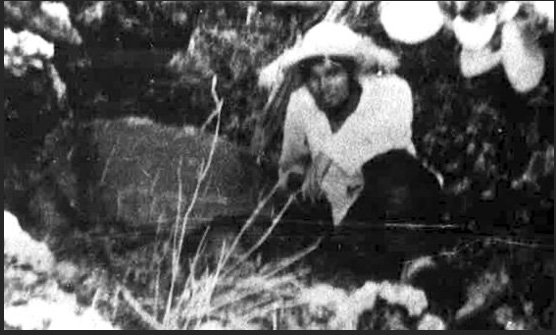
Manuel returned to the camp to break the news of their finding. It took four people to carry the large male tortoise, so heavy it was. Manuel described carrying a tortoise over uneven lava rocks a “horrible experience”.
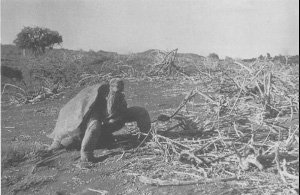
The following day a boat arrived and they loaded the tortoise to bring it back to the Charles Darwin Foundation. Meanwhile, Peter Pritchard and Manuel hiked up to the highlands of Pinta in search of another tortoise or signs of any more survivors, but only found bones. One of these remnants appeared to belong to a mature female, which had been killed some years earlier with a machete.
By all accounts the expedition was a success, but a bittersweet one: “Lonesome George” was found and saved, but the rest of his species was lost.
Fun fact: No one is certain who named “Lonesome George” - according to Julio Cesar San Miguel (GNP) “Lonesome” because is the only surviving individual of his species, and according to Gayle Davis-Merlen it was in honor of American actor George Goebel who called himself “Lonesome George”.
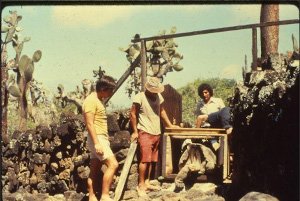
Once Lonesome George was brought back to the Charles Darwin Foundation, in collaboration with the Galapagos National Park, it was taken into the Tortoise Breeding Program.
When he first arrived, he was alone in his pen. Meanwhile, scientists and park authorities were actively searching for a suitable mate, since there was still hope that a female tortoise might be discovered on Pinta Island or somewhere else in the world. This motivated the GNP to return to the island to keep searching, while also prompting the CDF to issue the following announcement which was distributed to Zoos around the world:
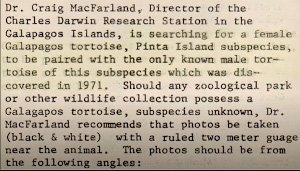
Sadly, no Pinta tortoises were found. The CDF and GNP decided to look for the closest related tortoises to Lonesome George's species, so two female giant tortoises (C. n. becki) from the Wolf Volcano region of Isabela Island, were deemed most similar. The scientists’ expectation was that by mating with these two females George’s offspring would become hybrids, and, while not purebreds of Pinta Island, at least his species would be saved.
Unfortunately, Lonesome George, showed little to no interest in these females. It wasn’t until July 2008 that Lonesome George finally mated with one of his female companions. A clutch of 13 eggs were collected and placed in incubators, but in November of 2008 the eggs failed to hatch and x-rays showed that they were non-viable. Following this, George lived up to his name and paid little to no interest towards his female companions.
In 2011, two female tortoises (C. n. hoodensis) from Española Island were imported into George’s corral, as genetic data shows that these species are more closely related to the Pinta species.
Yet, nothing happened. And on June 24th 2012, George was found dead in his corral by his long-time caretaker, Fausto Llerena. Our scientists confirmed that he had passed away from natural causes. His death was felt across the world, as it marked the extinction of his species – sending a powerful message about all potential future extinctions threatening our natural world.
Lonesome George’s legacy, while tragic, increased the awareness needed to protect, not only giant tortoises, but also numerous species found here in the Galapagos Islands. His death serves as a reminder that our actions in this world have consequences and that we can do better to prevent further species from going extinct.
“Whatever happens to this single animal, let him always remind us that the fate of all living things on Earth is in human hands.” - These words are inscribed on the information panel outside the enclosure of Lonesome George at CDRS/GNP.
References:
https://aquadocs.org/bitstream/handle/1834/23786/NG_53_1994_Cruz_Lonesome_George.pdf?sequence=1&isAllowed=y
https://www.researchgate.net/figure/Lonesome-George-on-Pinta-Island-in-March-1972-on-the-day-he-was-caught-by-National_fig1_227195370
https://en.wikipedia.org/wiki/Galápagos_tortoise
https://en.wikipedia.org/wiki/Lonesome_George
https://www.darwinfoundation.org/en/blog-articles/224-remembering-the-story-of-lonesome-george-in-the-galapagos-islands





